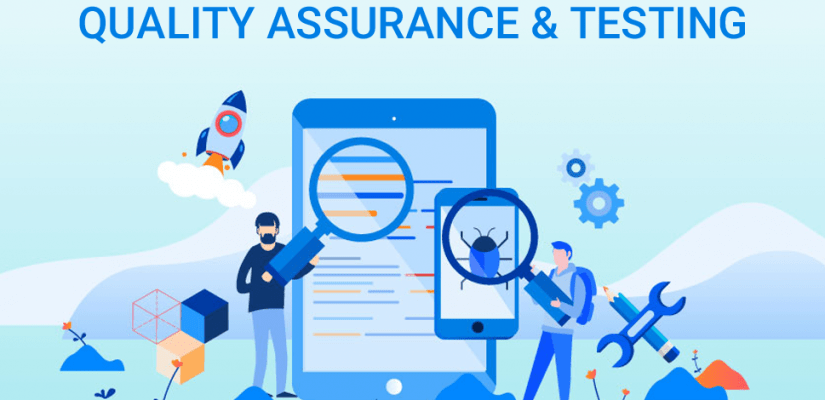Web Application Testing can be hectic for startups and small teams, but before we discuss how to simplify it, let’s get to know what Web Testing is?
Web Testing is all about checking your web app or website for prospective bugs before going live and can be easily accessed by the common public. Testing looks out for functionality, usability, security, compatibility, and the performance of the web app or website.
At this level, problems like web app safety, the working of the site, its açcessibility to the disabled and normal users, and its capacity to manage traffic are looked into.
What Are The Best Methods For Web Application Testing In Software Engineering?
-
Website Functionality Testing:
Website Functionality Testing is a procedure that has different parameters like UI, APIs, security testing, database testing, client and server testing, and the most basic web functionalities. Functional Testing is easy and helps
users perform manual Testing and Automated Testing. It looks into the functionalities of every feature on the website.
The Web-based Testing Activities comprise of:
- Outgoing Links
- Internal Links
- Anchor Links
- MailTo Links
For the Testing Forms to work as expected, you need to ensure that these factors work properly:
- Scripting checks on the form are working normally. If a user is not filling up a mandatory section in a form, an error message pops up.
- You need to ensure that the default values get populated.
- As soon as they get submitted, the data inside the forms get sent onto a live database or connected to a functional email address.
- Forms are best formatted for improved readability.
The best ways used by premier quality assurance software testing companies to check whether Test Cookies are functioning the way they should are:
- Cookies are mini files put to use by websites to mainly remember the active user sessions so that you don’t require logging in each time you are there on a website.
- Testing the cookies (sessions) are removed either at the time when the cache is removed or at the time when they reach their expiry.
- Remove the cookies and ensure that the login credentials are asked for when you visit the site next time.
You need to Test HTML and CSS to make sure that the search engines are easily able to crawl your site. This must include:
- Checking out the Syntax Errors.
- Color schemas that can be properly read.
- Ensure that standards like W3C, OASIS, ISO, IETF, ECMA, or WS-I are properly followed.
Testing The Business Workflows: This includes
- Testing your whole workflow and the business scenarios that take the user through the different web pages to be completed.
- The negative situations are also to be tested so that whenever a user implements some unexpected step, a proper error message or help message is visible in your web app.
2. Usability Testing:
Usability Testing has turned into an integral part of any web project. It can be performed by any tester or a mini focus group like the customer base of the web app.
Testing the website Navigation:
- Menus, buttons, or links to various pages on your website must be visible and present on every webpage.
Testing the Content:
- Content must be appropriate with no spelling or grammar mistakes.
- If the images are present, they must consist of an “alt” text.
3. Interface Testing:
The 3 main areas that need to be tested in the case of Interface Testing are Application, Website, and Database Server.
- Application: Test requests are sent properly to the Database whether the output placed at the client side is displayed properly or not. If any mistakes exist, they must get caught by the app and be showcased only to the administrator in place of the end-user.
- Web Server: Test Web Server is all about taking care of all application requests without service denial.
- Database Server: You need to ensure that the queries sent to the Database provide the best results. It is also about the Test system response at a time when the connectivity between the 3 layers (App, Web, and Database) couldn’t be established, and the right message would be shown to the final user.
If the connection between these can’t be established, a relevant message is displayed to the end-user.
4. Database Testing:
The Database is an important part of your web application, and you must try your best to test it properly while testing a website. Database Testing activities will include-
- You must test if errors pop up while executing queries.
- Data Integrity is considered while creating, updating, or removing data in the Database.
- Check the response time taken by the queries and fine-tune them if the need arises.
- Test data extracted from your Database is shown precisely in your web application.
5. Compatibility Testing:
Compatibility Tests ensure that your web app displays perfectly on all kinds of devices. This includes-
Browser Compatibility Test: The same website will display differently in another browser. You must first test whether your web app is displayed properly on browsers like JavaScript, AJAX and whether the authentication is functioning properly. You can also check the Mobile Browser Compatibility.
Web elements like the buttons, text fields, etc., are rendered, but the rendering alters with alterations in the Operating System. Therefore, you must ensure that your website works perfectly well for all the different combinations of Operating Systems like Windows, Linux, Mac, and Browsers like Firefox, Safari, Internet Explorer, etc.
6. Performance Testing:
This one makes sure that your site works fine under all loads. The Software Testing Activities for this one are:
- Website Application response times at various connection speed rates.
- Load Test your web app to understand its behavior under normal and excessive load.
- Stress Test your website to understand its breakpoint whenever stressed by excessive loads during the important time.
- You can test whenever a crash happens due to a high load to ensure that the site gets back to normal from this kind of event.
- You need to ensure that the optimization methods like the gzip compression, browser, and server-side cache are activated to bring down the load times.
7. Security Testing:
Security Testing is important for all e-commerce websites that maintain delicate customer information like credit cards. The Testing Activities for this must include-
- Test unauthorized access to safe pages must not be allowed.
- Restricted files must not be downloadable without perfect access.
- Check sessions lapse after long hours of user inactivity on their own.
- The website must be redirected to encrypted SSL pages using SSL certificates.
8. Crowd Testing:
In this case, you’ll get to choose from a huge group of people or a large crowd to implement tests that would otherwise have been executed by a small section of people in the company.
Crowdsourced Testing is a wonderful, new concept that helps unleash many hidden defects.
Conclusion
As a Web Tester, it’s vital to note that testing a website is a tedious procedure, and it’s normal for you to encounter innumerable hurdles. An important problem that you’ll come across is the deadline pressure. It becomes a tough job if the code is to be changed so many times. This is why you must ensure that you can manage your work and know what is expected from you. At Hikeqa, we have a talented team ready to help all startups and small teams struggling with Web Application Testing. Contact us for any queries.

















